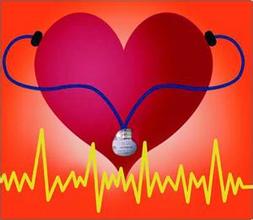This is now going to dump into what we call a venule. A venule.
這時(shí)血液進(jìn)入小靜脈。小靜脈
And this venule is gonna basically then feed into many, many other venules.
大家看這條小靜脈會(huì)跟無數(shù)其他小靜脈匯合
Maybe there's a venule down here coming in, and maybe a venule up here coming in.
可能這里有一條小靜脈進(jìn)來,這里有一條小靜脈進(jìn)來
Maybe from the second toe,
可能這條小靜脈來自第二個(gè)腳趾
and it's gonna basically all kind of gather together,
所有小靜脈匯合
and again, to a giant, giant set of veins.
得到一個(gè)大的靜脈束
You know, maybe veins are dumping in here now, maybe another vein dumping in here,
可能這里有靜脈匯入,可能這里還有別的靜脈
and these veins are all going to dump into an enormous vein that we call the inferior vena cava.
這些靜脈都匯入一條大靜脈,叫做下腔靜脈
I'll write that right here. Inferior vena cava
我寫在這,這就是“下腔靜脈”
And this is the large vein that brings back all the blood from the bottom half of the body.
這是把所有血液從身體下部各處送回心臟的大靜脈
There's also another one over here called the superior vena cava,
當(dāng)然還有一條上腔靜脈
and this is bringing back blood from the arms and head.
上腔靜脈是輸送胳膊、頭部血液的大靜脈
So these two veins, the superior vena cava and the inferior vena cava, are dragging the blood back to the heart,
上腔靜脈和下腔靜脈這兩條靜脈將血液送回心臟
and, generally speaking, these are all considered, of course, veins.
這些都是靜脈血管
Let's back up now and start with the large and medium arteries.
下面我們看大中型動(dòng)脈

These guys together are sometimes referred to as elastic arteries.
上邊這兩組,叫做彈性動(dòng)脈
Elastic arteries, and the reason they're called elastic arteries,
彈性動(dòng)脈是什么意思呢?為什么它們叫彈性動(dòng)脈呢?
one of the, one of the good reasons why they're called that is that
之所以它們叫彈性動(dòng)脈
they have a protein in the walls of the blood vessel called elastin.
是因?yàn)檫@些血管壁中存在一種彈性蛋白
They have a lot of this elastin protein, and, if you think about the word elastin or elastic,
存在大量的彈性蛋白。大家看著兩個(gè)詞 “彈性蛋白”和“彈性”
you know, obviously similar words, you might think of something like a rubber band or a balloon,
很相近,大家想一下橡皮筋或者氣球
and that's probably the easiest way to think about it.
這樣比較好理解
If you have a blood vessel, one of these large arteries for example,
那么假設(shè)有一條大動(dòng)脈
and let's say blood is under a lot of pressure, right?
血壓是很高的
Because the heart is squeezing out a lot of high pressure blood
心臟把血液擠壓輸送出去,那么動(dòng)脈血壓是很高的
This artery is literally going to balloon out,
那么血管可能就要膨脹
and if you actually looked at it from the outside, it would look like a little sausage.
從外邊看的話,可能就像一根香腸
Something like this, where it's puffed out.
血管會(huì)有膨脹
So what's happened there between the first and second picture is that the pressure energy,
那么,在這兩幅圖之間發(fā)生變化的就是壓力能
so the heart is squeezing out a lot of pressurized blood,
心臟把高壓血液輸送出去
and of course, there's energy in that blood, right?
能量就儲(chǔ)存在血液中
That pressure energy has been converted over into elastic energy.
這部分壓力能,就轉(zhuǎn)化成了彈性能
It's actually converting energy.
發(fā)生了能量轉(zhuǎn)換
We don't really always think about it that way, but that's exactly what's happening,
一般我們不這么來看,但確實(shí)是發(fā)生了能量轉(zhuǎn)換
and when you convert from pressure energy to elastic energy,
壓力能轉(zhuǎn)換為彈性能的時(shí)候
what you are really then doing is you're balancing out those high pressures.
實(shí)際發(fā)生了什么呢?實(shí)際是平衡掉了血液的高壓
So you're balancing out high pressures.
把血液的高壓平衡一下
High pressures, and this is actually very important
為什么這么做呢?
because the blood that's coming into our arteries is under, let's not forget, high pressure.
因?yàn)閯?dòng)脈中的血液血壓太高了,必須采取措施平衡一下
So the arteriole system, we know, is a high pressure system.
動(dòng)脈系統(tǒng)是血壓很高的系統(tǒng)
So this makes perfect sense that the first few arteries,
所以這些動(dòng)脈
those large arteries and even those medium-sized arteries are going to be able to deal with the pressure really well
大動(dòng)脈,甚至是中型的動(dòng)脈必須要能承受血液的高壓



